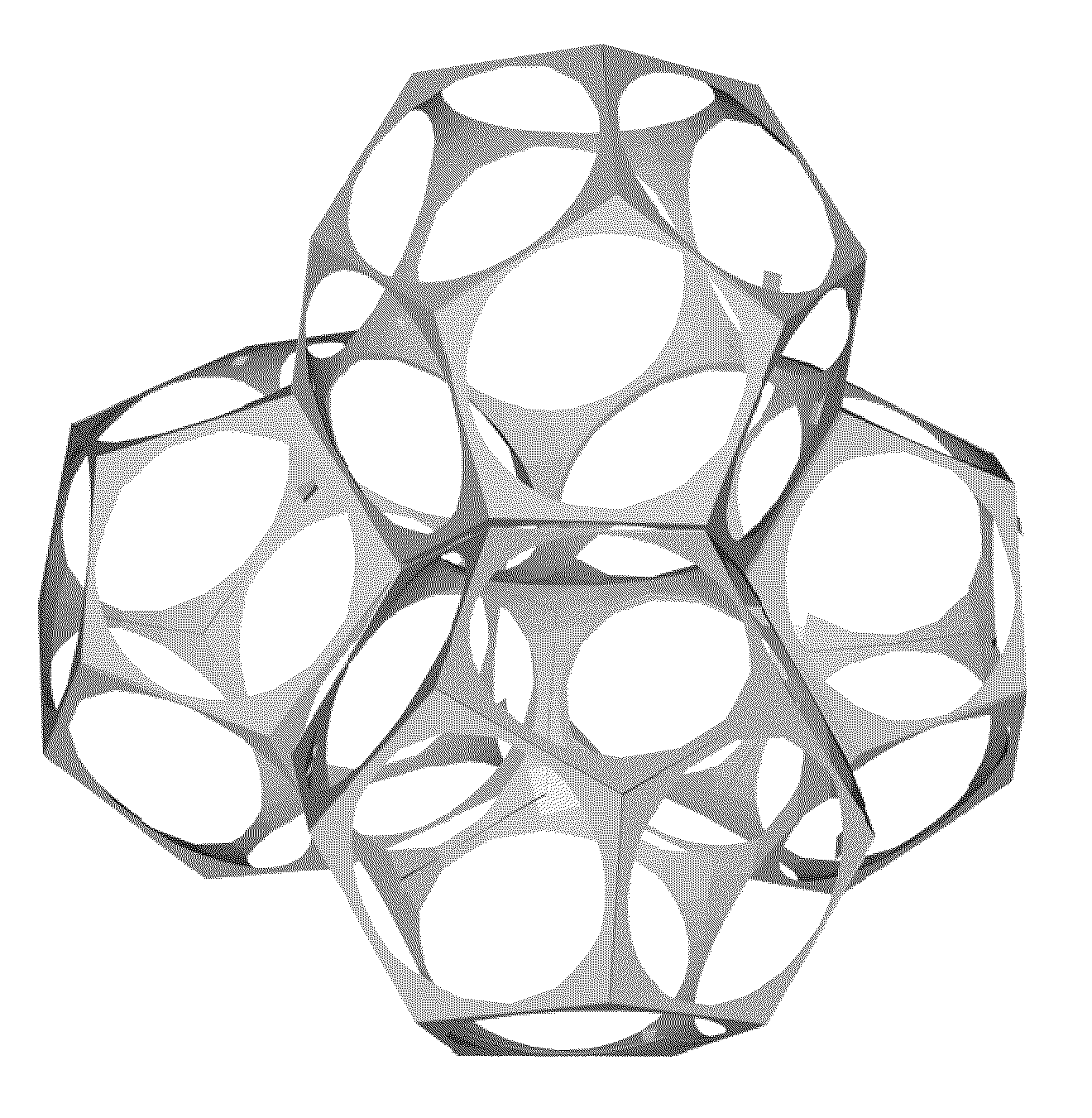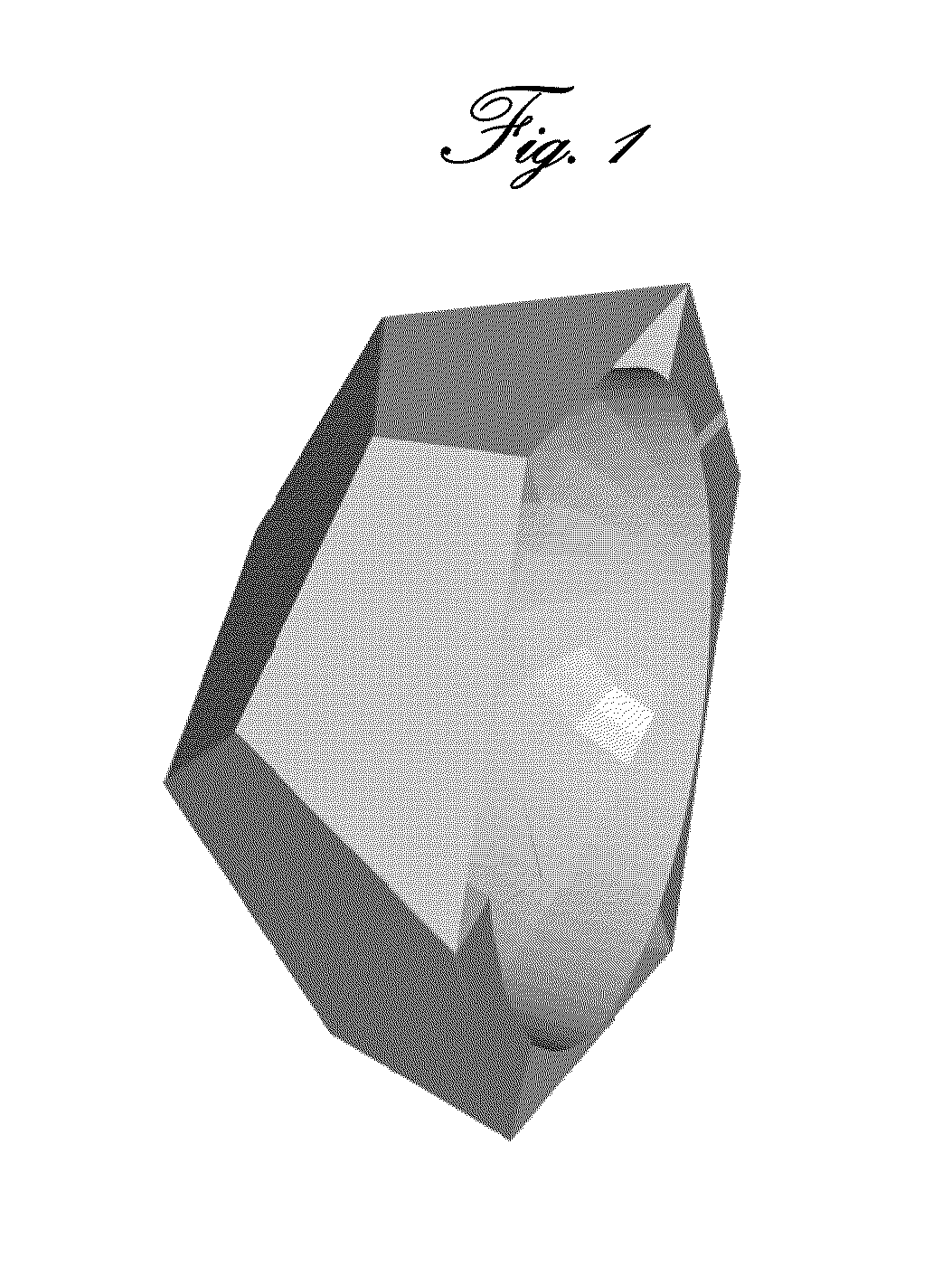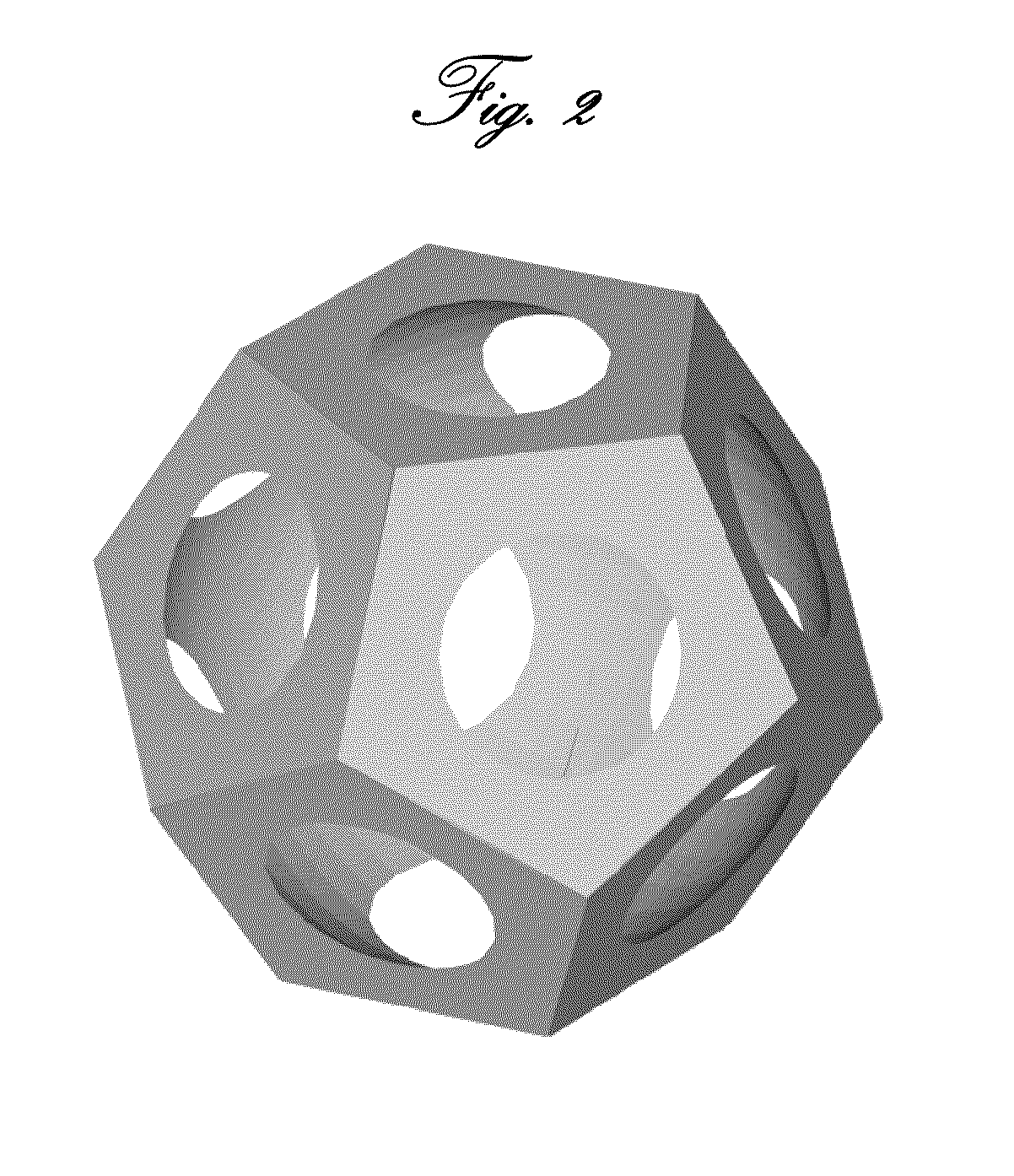Inorganic structures with controlled open cell porosity and articles made therefrom
a technology of open cell porosity and organic structure, which is applied in the field of organic structure with controlled open cell porosity and articles made therefrom, can solve the problems of preventing osteoblast growth, limiting the progress of osteoblasts, and achieving the porosity that can be achieved
- Summary
- Abstract
- Description
- Claims
- Application Information
AI Technical Summary
Benefits of technology
Problems solved by technology
Method used
Image
Examples
Embodiment Construction
[0070]In its most elementary form, the method of the instant invention consists of using a stable, uniform, substantially dodecahedral aqueous foam as a scaffold on which the intended cellular body is constructed. This is done by incorporating metal or ceramic particulates into a foaming solution. Upon foaming, the particulates assemble at the dodecahedra's interfaces or cell edges, forming the struts of the intended cellular body. Following extraction of the foaming solution constituents, the remaining skeleton of particulates is sintered. Size uniformity of the foam bubbles translates directly into cell uniformity in the sintered cellular body.
[0071]A major objective of the present invention is to provide a method for producing cellular biomedical implants with optimized, osteoconductive porosity. Such articles require strict control over the amount, uniformity, distribution, size and connectivity of the cells. Coated reticulated polymer foams, most notably PU foams, are routinely...
PUM
| Property | Measurement | Unit |
|---|---|---|
| Particle size | aaaaa | aaaaa |
| Viscosity | aaaaa | aaaaa |
| Electric potential / voltage | aaaaa | aaaaa |
Abstract
Description
Claims
Application Information
 Login to View More
Login to View More - R&D
- Intellectual Property
- Life Sciences
- Materials
- Tech Scout
- Unparalleled Data Quality
- Higher Quality Content
- 60% Fewer Hallucinations
Browse by: Latest US Patents, China's latest patents, Technical Efficacy Thesaurus, Application Domain, Technology Topic, Popular Technical Reports.
© 2025 PatSnap. All rights reserved.Legal|Privacy policy|Modern Slavery Act Transparency Statement|Sitemap|About US| Contact US: help@patsnap.com



